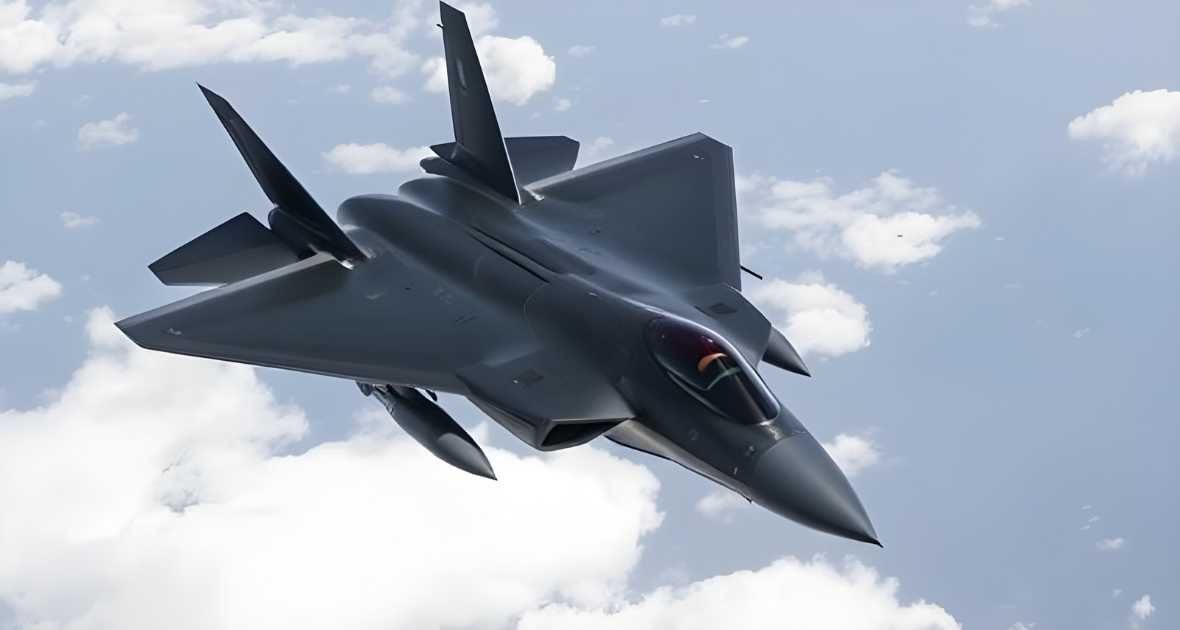Stealth technology has become a hallmark of airpower in the 21st century, and no nation has embraced this transformation like China. Over the past decade, China has made significant advances in its stealth fighter program, positioning itself as a formidable competitor in air dominance.
With jet fighters such as the J-20, J-35, and the rumored J-36 on the horizon, the Chinese military has shown its commitment to modernizing its air force and challenging established powers like the United States. But what makes these jets stand out, and what are their implications for global defense dynamics?
This blog explores China’s cutting-edge stealth fighter jets, their unique features, and their potential impact on the global stage.
Table of Contents
The J-20 Stealth Fighter
The J-20, also known as the “Mighty Dragon,” is the crown jewel of China’s stealth fighter program. Developed by Chengdu Aircraft Industry Group and officially introduced into service in 2017, the J-20 is designed to achieve superiority in the skies.
Capabilities and Design
- Stealth Features: The J-20 incorporates advanced stealth technologies, such as radar-absorbent materials and a sleek shape, to reduce its radar cross-section.
- Weaponry: This fighter is built to engage high-value air assets, including aerial refueling tankers, Airborne Warning and Control Systems (AWACS), and other critical platforms.
- Engines: While early models relied on Russian engines, newer versions likely feature indigenous engines to boost speed, range, and performance.
Role in Air Superiority
The J-20’s primary role is to provide air dominance by neutralizing enemy aircraft and denying their control of airspace. Its large size also allows it to carry various weapons, from air-to-air missiles to precision-guided munitions for ground strikes.
The J-35 Multirole Stealth Fighter
The J-35, a medium-sized stealth fighter, is China’s response to Lockheed Martin’s F-35. Shenyang Aircraft Corporation is spearheading this project, which demonstrates China’s ambition to compete against the world’s best fighter jets.
Features and Multirole Capabilities
- Versatility: Unlike the J-20, the J-35 is designed for both air superiority and strike missions, making it a multirole aircraft capable of excelling in various combat scenarios.
- Stealth Enhancements: Built with conformal surfaces and advanced radar-blocking materials, the J-35 promises low observability across different combat environments.
- Naval Operations: The J-35 is expected to serve aboard China’s aircraft carriers, enhancing its maritime power projection.
J-35 vs. F-35 Comparison
Both competitors are multiple stealth fighters, but while the F-35 boasts extensive combat experience and an established logistics network, the J-35 represents a more accessible alternative for nations interested in China’s growing military exports.
The Mysterious J-36 Stealth Fighter
While the J-20 and J-35 are active programs, the J-36 is speculative, potentially signifying China’s sixth-generation fighter ambitions.
Speculated Sixth-Generation Capabilities
- Tailless Design: Early models suggest a tailless configuration, significantly reducing visibility to radar systems.
- High-Altitude Operations: The J-36 could operate at high altitudes, giving it better situational awareness over vast combat areas.
- Advanced Stealth Features: With additions like plasma cloaking and enhanced material absorption, the J-36 might represent the cutting edge of stealth technology.
Strategic Implications
If realized, the J-36 might redefine regional power dynamics, offering China unprecedented control in both contested and uncontested airspaces.
Technology and Design of China’s Stealth Fighters
China’s stealth fighter jets push the boundaries of modern aerospace engineering.
Stealth Features
- Conformal Surfaces minimize reflections and reduce detectability.
- Doubtless, Supersonic Intakes (DSIs) lower radar signature while enhancing engine efficiency.
- Radar-Absorbent Materials provide additional stealth by absorbing radar waves.
Advanced Systems
- Data Link Systems improve coordination between aircraft.
- Artificial Intelligence Integration helps mission management outperform human reaction times in complex scenarios.
- Electronic Warfare Suites enable the aircraft to jam enemy radars and disrupt missile guidance systems.
Global Implications
China’s advances in stealth technology have far-reaching implications for geopolitics and military strategies.
Impact on Air Defenses and Military Strategies
The evolution of China’s stealth fighters forces other nations to rethink their defensive strategies, especially in areas like the Taiwan Strait. Traditional air defense systems may struggle to detect and target these advanced aircraft, prompting rapid upgrades in systems such as the Patriot and Iron Dome.
Regional Power Dynamics
China’s stealth arsenal enhances its ability to project power across the Asia-Pacific region, challenging the dominance of the U.S. and its allies. This could lead to intensified arms races and greater tensions in contested areas, such as the South China Sea.
What Do China’s Stealth Innovations Mean for the Future?
China’s stealth fighter program reinforces its determination to be a global leader in military technology. Whether through the combat-ready J-20, the versatile J-35, or the ambitious J-36, these advancements will undoubtedly reshape geopolitical and defense landscapes in the coming years.
If these aircraft meet their potential, air combat will witness a dramatic shift, sparking rapid technological advancements and a heightened focus on counter-stealth measures.
For defense strategists, policymakers, and global observers, these developments remind us that military innovation never stops. To thrive in this evolving landscape, stakeholders must stay informed and proactive.
FAQs
What is the role of the J-20 stealth fighter?
The J-20 is primarily designed for air superiority, targeting high-value assets to dominate enemy airspace.
How does the J-35 compare to the F-35?
While the F-35 has a mature operational framework and combat experience, the J-35 serves as a competitive multiple platform with growing potential.
What technologies contribute to the stealth of Chinese fighter jets?
Key technologies include conformal surfaces, radar-absorbent materials, and divertless supersonic inlets.
Why is the J-36 considered a sixth-generation fighter?
The J-36’s speculative design includes tailless configurations, high-altitude capabilities, and advanced AI integration, typical of next-generation combat aircraft.
How do these jets affect global military strategies?
They compel nations to improve air defenses, reevaluate power projections, and engage in technological arms races to maintain military balance.

